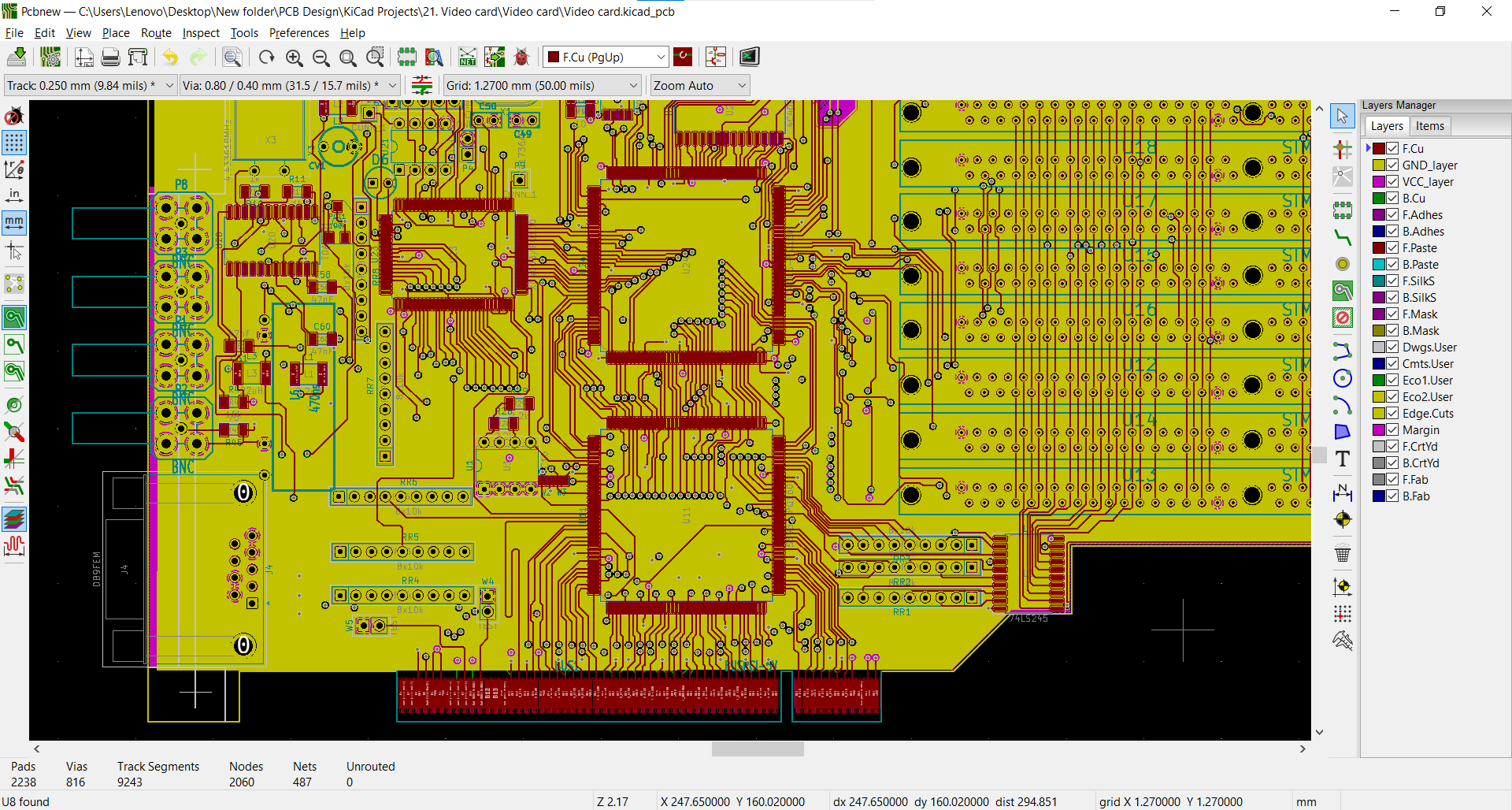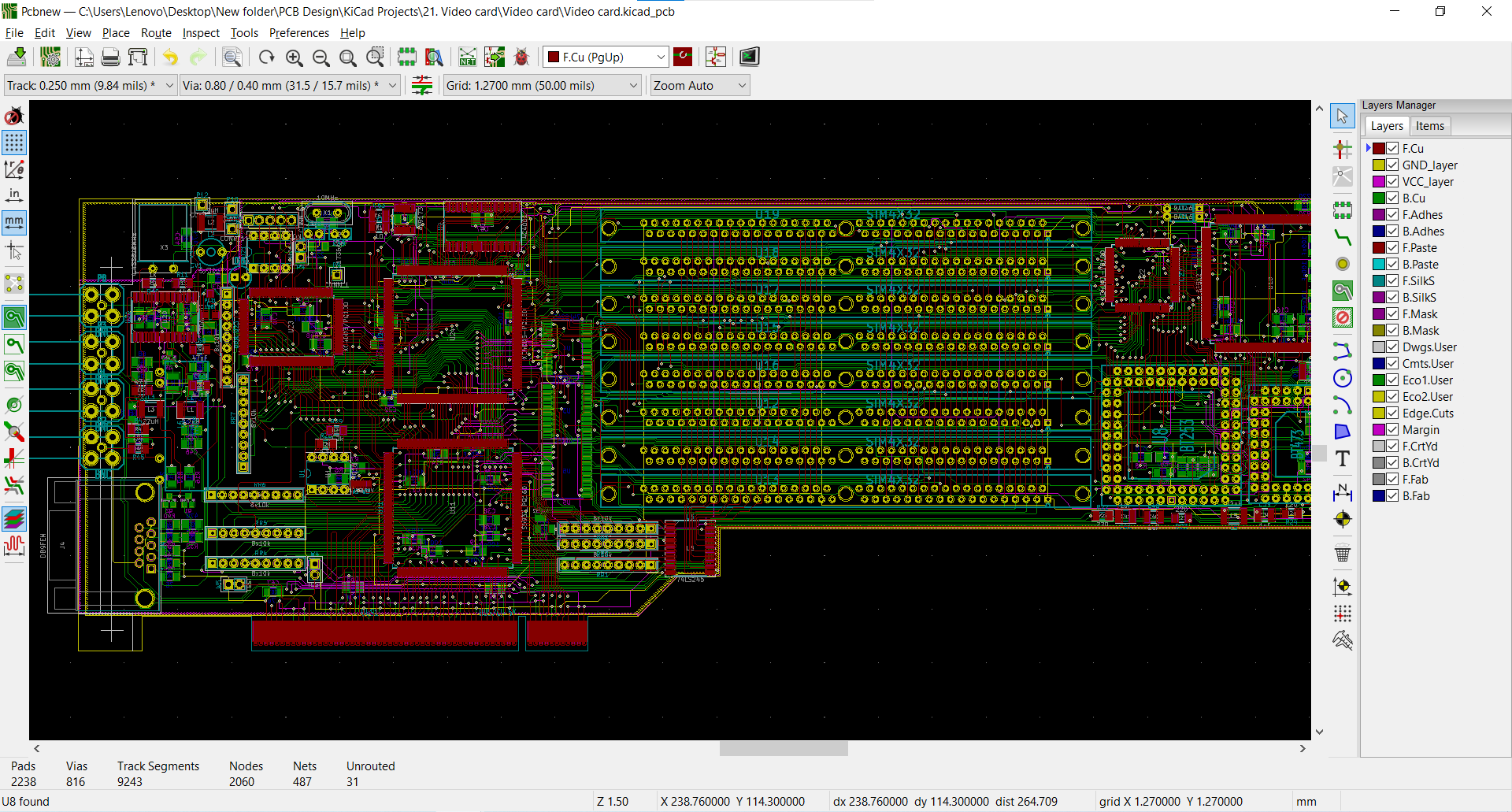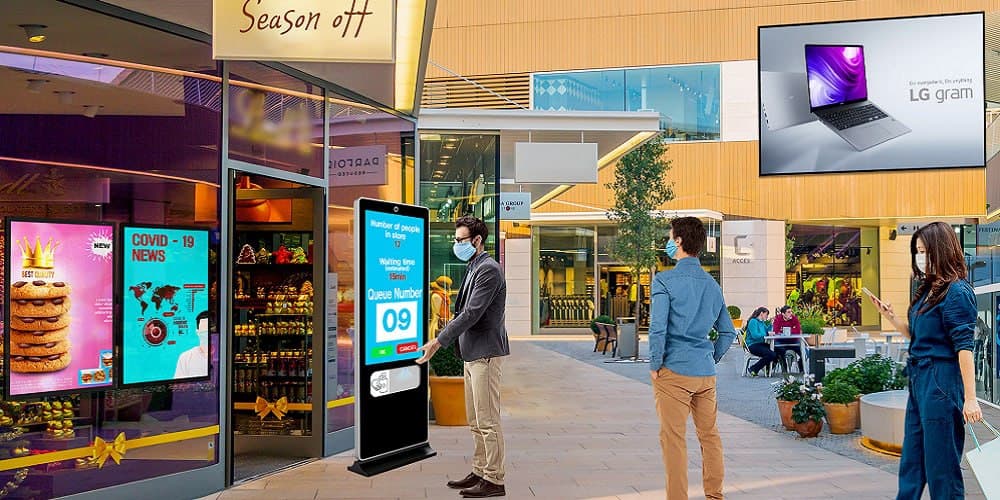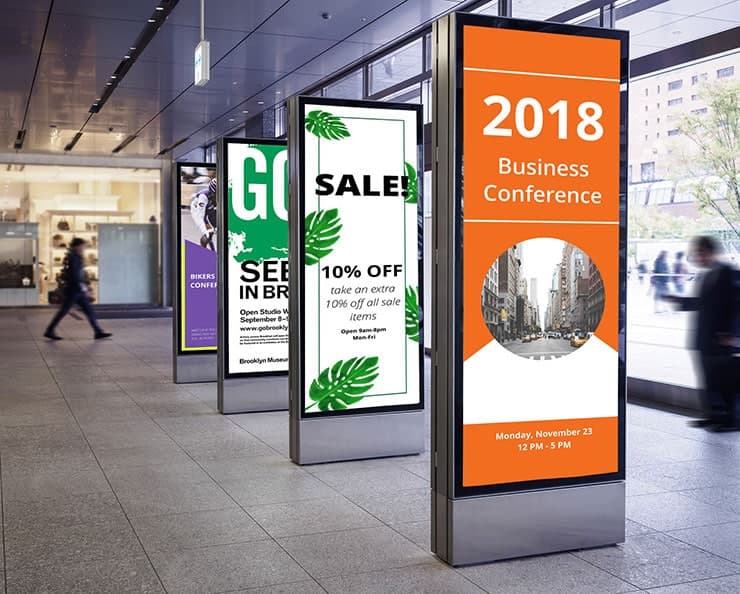Our Projects
Telenetronics high-performance video card

With the processing power requirements increasing nowadays, modern computer systems are in need of advanced graphics. To achieve this, separate video cards yield the best results. Given these facts we took the challenge, in cooperation with computer experts in the region to develop the best pcb design for a video card, which will be power efficient and of high performance.
Goal
Using two powerful Xilinx microcontrollers and an intel processor this video card promised our expectancies. It has a standard socket attached to the main board in the computer. With the core clock speed of 1GHz it is able to support high quality video processing.
Work done
With special care and investing hours in the design, our engineers in the department of electronic design have gone through a detailed process of creating a schematic and routing. The layout is made of over 9000 connections manually routed. Going through vias to multiple layers the connections are where they should be.
Technology used
The design and layout are done using the KiCad software followed by SIPro, where the signal integrity tests are performed.
OpenALPR Plate recognition

With industries turning to more automated systems in production, management and security, our work on smart solutions has increased in demand. We have built a plate recognition system based on the most advanced operating algorithms to enable easy monitoring of incoming vehicles.
Goal
High frequency of transportation means results in high frequency of vehicles incoming and leaving the industry zone, which further means increased controls. To avoid pressure on the working staff automated plate recognition systems, do this job for us. Registered company vehicles will have free automated entrance and clients’ vehicles will be saved in the data base at their first arrival. In parking lots this is even more useful.
Working principle
When a vehicle arrives, his plate is being read using the systems’ Tesseract OCR library which recognizes characters from a picture. When the characters are read, the combination is saved in the data base with the time of entrance, triggering the tollgate to open and let the vehicle pass by. Upon leaving the plate is recognized and searched for in the data base. Paycheck is generated according to the duration of stay. If having a membership card, the card is slided over the opening sensor an the tollgate is lifted. If not, there is an instrument for credit card payments. The system supports monthly and annual membership payments.
Technologies used
The system is created using Python programming language. For processing the images into readable content shot by the cameras the OpenCV package has been used. To store the data about the vehicles we collect the MySQL data base is used.
SERV Face recognition
The still widely used employer working time recording system in modern companies where the employers have to check their membership cards isn’t that flawless anymore, when his successors have better solutions. Starting with the possibility that an employer can lose or forget his card when coming to work we turned to something less likely to lose, you face. The employer is checked for his entrance and exit time by cameras who scan his face. Biometrics is a must-go-to in the future and our awareness is seen in our production.
Goal
Using modern technologies checking is easier and stressless and safer. Unlike the old fashioned technologies your card can be used by other people. With SERV, the risk of this type is cut to the bone.
Working principle and technologies used
The system is made of the hardware part, which includes the cameras and image processing device and the software part, consisting of the image processing program and data base.
The program is written in Python. For reading and processing of face images we use OpenCV, as for the face detection the Dlib library has been implemented. Dlib efficiently makes us of the ‘deep metric learning’. For face recognition we use an easy to use set of face recognition utility that wraps around Dlib called ‘face_recognition’
When a person gets employed in the company, his biometrics are registered in the data base. After that he is allowed to easily access the companies enclosures with face recognition.
Note that each employer has his account made in the system. To each person, sections which he can access are assigned.
Meaning that if he heads to a room he isn’t allowed to access the door won’t open.
Digital Signage

Digital signage is a segment of electronic signage. Digital displays use technologies such as LCD, LED, projection and e-paper to display digital images, video, web pages, weather data, restaurant menus, or text. They can be found in public spaces, transportation systems, museums, stadiums, retail stores, hotels, restaurants and corporate buildings etc., to provide wayfinding, exhibitions, marketing and outdoor advertising.
Our platform is suited to a wide range of digital signage applications.
You can use Digital Signage Application for 5 minutes with Our Server and Hardware solution.
We offer samples based on hardware-based models, which can be easily customized to fit your project and you can manage them from anywhere via the internet.
Create engaging displays with images, videos, social media, and much more.
Easy and Simple Design, with HD Display friendly edition.
You can use our solution in:
-Digital Reader Boards
Reader boards encompass a wide variety of basic signage applications including:
• Building Directories
• Break Room / Lounge Displays
• Waiting Room Displays
• Lobby / Entrance Boards
• Event / Meeting Boards
Interactive Displays
Turn any display into an interactive kiosk in minutes using any of our available methods including custom scripting or embedded webpages. It's also possible to utilize any number of external sensor devices to trigger content including:
• RFID
• Motion Detection
• Face Detection with Age/Gender Triggering
• Physical Contacts
Mobile
Our platform includes a mobile solution for digital content delivery. You can schedule content for your mobile app users utilizing the same great features found in our digital signage CMS. Simply determine how you want your content activated, then schedule the content you want your viewers to see.
Content can be activated on mobile devices in a number of ways including:
• Geofencing
• QR Code
• NFC
• Bluetooth Beacons
• Push Notifications





